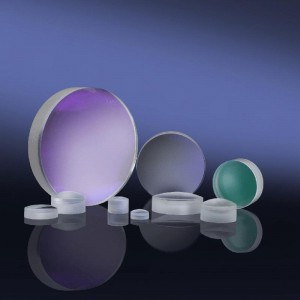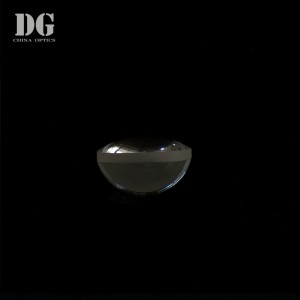Optical lenses
-

Cylindrical lenses
Cylinder lenses are a type of lens that have differing radii in the X and Y axes, causing the lens to have a cylindrical or semi-cylindrical shape, and image magnification in only a single axis. Cylinder lenses are commonly used as laser line generators, or to adjust image height size or correct for astigmatism in imaging systems. -

Positive Cylindrical Lenses Plano-Convex Cylinder Lenses
A Cylindrical lens is a special type of cylinder lens, and is highly polished on the circumference and ground on both ends. Cylindrical lenses perform in a manner analogous to a standard cylinder lens, and can be used in beam shaping and to focus collimated light into a line. -

Popular Bk7 Diameter 74mm Anti-reflection Coating Optical Glass Plano-convex Cylindrincal Lens
A Cylindrical lens is a special type of cylinder lens, and is highly polished on the circumference and ground on both ends. Cylindrical lenses perform in a manner analogous to a standard cylinder lens, and can be used in beam shaping and to focus collimated light into a line. Cylindrical lenses are optical lenses which are curved only in one direction. Therefore, they focus or defocus light only in one direction, for example in the horizontal direction but not in the vertical direction. As for ordinary lenses, their focusing or defocusing behavior can be characterized with a focal length or its inverse, the dioptric power. Cylindrical lenses can be used to obtain a beam focus of elliptical form. That can be required, for example, for feeding light through the entrance slit of a monochromator or into an acousto-optic deflector, or for conditioning pump light for a slab laser. There are fast axis collimators for diode bars, which are essentially cylindrical lenses – often with an aspheric shape. Cylindrical lenses cause astigmatism of a laser beam: a mismatch of focus position for both directions. Conversely, they can also used for compensating astigmatism of a beam or an optical system. For example, they may be required for collimating the output of a laser diode such that one obtains a circular non-astigmatic beam. The main significance of a cylindrical lens is its ability to focus light onto a continuous line rather than a fixed point. This quality gives the cylindrical lens various unique abilities, such as laser line generation. Some of these applications simply aren’t possible with a spherical lens. Cylindrical lens capabilities . -

Symmetrical Biconvex Lens, Custom Made Coating Spherical Double Convex Lens
An achromatic lens, often called an achromat, is a type of optical lens capable of correcting chromatic aberration, a distortion that occurs when glass splits white light into multiple colorwavelengths in the spectrum.
Chromatic aberration is a common type of imaging defect. When white light passes through a singlet lens, the wavelengths of light are refracted. Because different wavelengths pass through the glass at different rates, they come into focus at different points on the plane. As a result, the operator will not be able to bring all the colors into focus simultaneously. Chromatic aberration creates blurry fringes of color between dark and light parts of an image, significantly reducing image quality.
To deal with the problem of chromatic aberration, people rely on achromatic lenses, which combine two or more lenses to direct two wavelengths of light, usually red and blue, to the same focal point. -

Optical Cemented Achromatic Doublet Glass Lens, Near Infrared Coating for Ophthalmic Instrument
An achromatic lens or achromat is a lens that is designed to limit the effects of chromatic and spherical aberration. Achromatic lenses are corrected to bring two wavelengths (typically red and blue) into focus on the same plane. -

double convex lens
Bi-Convex Lenses are the best choice where the object and image are at equal or near equal distance from the lens. When the object and image distance are equal (1:1 magnification), not only is spherical aberration minimized, but also coma, distortion, and chromatic aberration are identically canceled due to the symmetry. -

plano-convex lens
Plano-Convex Lenses are ideal for light collimation or for focusing applications, in a winde range of industries including industrial, pharmaceutical, robotics and other fileds.







